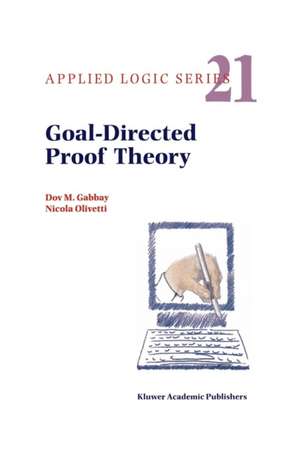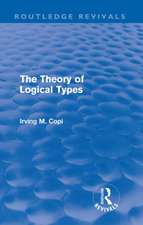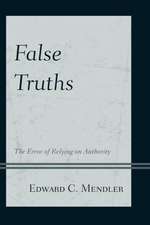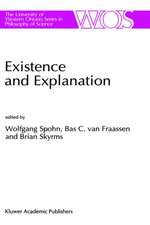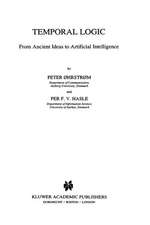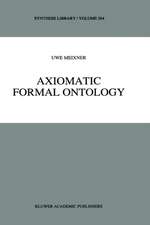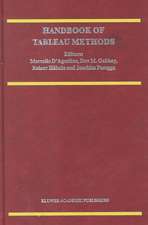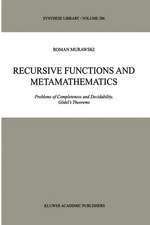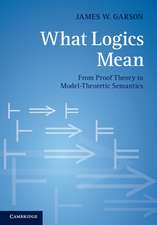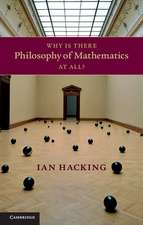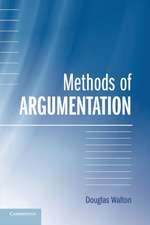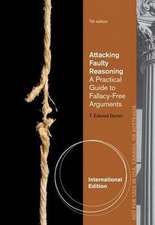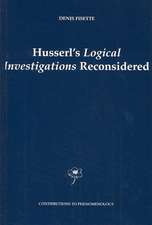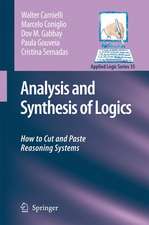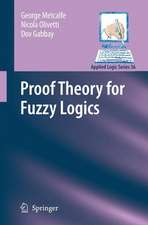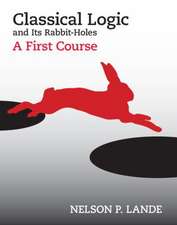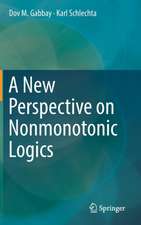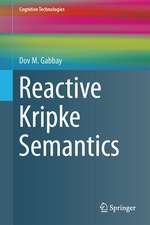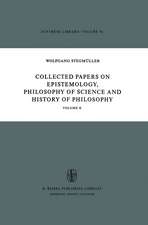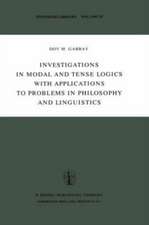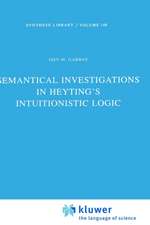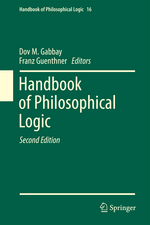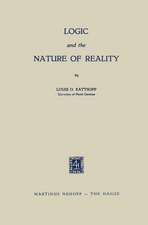Goal-Directed Proof Theory: Applied Logic Series, cartea 21
Autor Dov M. Gabbay, N. Olivettien Limba Engleză Paperback – 4 dec 2010
Readership: Computer scientists, mathematicians and philosophers, and anyone interested in the automation of reasoning based on non-classical logics. The book is suitable for self study, its only prerequisite being some elementary knowledge of logic and proof theory.
| Toate formatele și edițiile | Preț | Express |
|---|---|---|
| Paperback (1) | 639.59 lei 6-8 săpt. | |
| SPRINGER NETHERLANDS – 4 dec 2010 | 639.59 lei 6-8 săpt. | |
| Hardback (1) | 645.96 lei 6-8 săpt. | |
| SPRINGER NETHERLANDS – 31 aug 2000 | 645.96 lei 6-8 săpt. |
Din seria Applied Logic Series
- 18%
 Preț: 1109.26 lei
Preț: 1109.26 lei - 20%
 Preț: 996.22 lei
Preț: 996.22 lei - 18%
 Preț: 957.13 lei
Preț: 957.13 lei - 15%
 Preț: 646.75 lei
Preț: 646.75 lei - 18%
 Preț: 1225.62 lei
Preț: 1225.62 lei - 18%
 Preț: 956.33 lei
Preț: 956.33 lei - 18%
 Preț: 957.44 lei
Preț: 957.44 lei - 18%
 Preț: 959.98 lei
Preț: 959.98 lei - 15%
 Preț: 639.73 lei
Preț: 639.73 lei - 18%
 Preț: 945.79 lei
Preț: 945.79 lei - 18%
 Preț: 949.55 lei
Preț: 949.55 lei - 18%
 Preț: 952.40 lei
Preț: 952.40 lei - 15%
 Preț: 637.13 lei
Preț: 637.13 lei - 20%
 Preț: 1001.86 lei
Preț: 1001.86 lei - 15%
 Preț: 645.28 lei
Preț: 645.28 lei - 18%
 Preț: 957.32 lei
Preț: 957.32 lei - 15%
 Preț: 649.06 lei
Preț: 649.06 lei - 18%
 Preț: 953.20 lei
Preț: 953.20 lei - 15%
 Preț: 589.65 lei
Preț: 589.65 lei - 15%
 Preț: 648.74 lei
Preț: 648.74 lei - 18%
 Preț: 1117.99 lei
Preț: 1117.99 lei - 20%
 Preț: 338.03 lei
Preț: 338.03 lei - 18%
 Preț: 956.03 lei
Preț: 956.03 lei - 18%
 Preț: 953.65 lei
Preț: 953.65 lei
Preț: 639.59 lei
Preț vechi: 752.45 lei
-15% Nou
Puncte Express: 959
Preț estimativ în valută:
122.40€ • 132.91$ • 102.82£
122.40€ • 132.91$ • 102.82£
Carte tipărită la comandă
Livrare economică 22 aprilie-06 mai
Preluare comenzi: 021 569.72.76
Specificații
ISBN-13: 9789048155262
ISBN-10: 9048155266
Pagini: 284
Ilustrații: X, 268 p.
Dimensiuni: 155 x 235 x 15 mm
Greutate: 0.4 kg
Ediția:Softcover reprint of the original 1st ed. 2000
Editura: SPRINGER NETHERLANDS
Colecția Springer
Seria Applied Logic Series
Locul publicării:Dordrecht, Netherlands
ISBN-10: 9048155266
Pagini: 284
Ilustrații: X, 268 p.
Dimensiuni: 155 x 235 x 15 mm
Greutate: 0.4 kg
Ediția:Softcover reprint of the original 1st ed. 2000
Editura: SPRINGER NETHERLANDS
Colecția Springer
Seria Applied Logic Series
Locul publicării:Dordrecht, Netherlands
Public țintă
ResearchCuprins
1 Introduction.- 2 Intuitionistic and Classical Logics.- 3 Intermediate Logics.- 4 Modal Logics of Strict Implication.- 5 Substructural Logics.- 6 Conclusions and Further Work.
